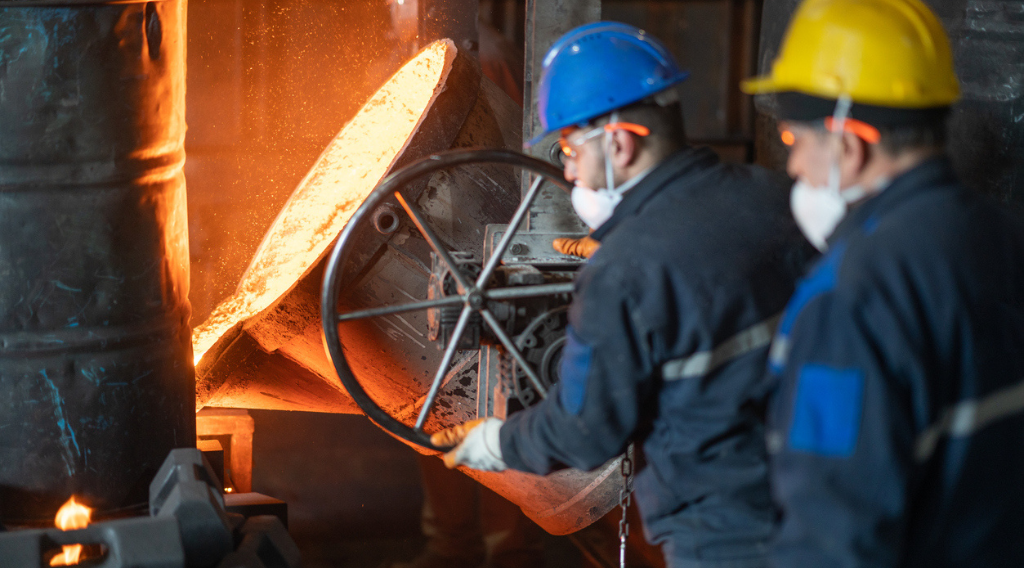
This blog is one in a series that celebrates the wide variety of professionals who have been touched by the Great Plains Institute (GPI). Together – GPI’s spring 2020 campaign – showcases people who work in multiple industries and have various constituents and customers, but all play an important role in helping America transform its energy system. Read all the stories in the Together series here.
NAME: Richard Middleton
AFFILIATION: Los Alamos National Laboratory, New Mexico
TITLE: Senior Scientist, Computational Earth Science
The Time is Right
Great Plains Institute (GPI) has helped Richard ensure his award-winning work has real-world impact on the climate challenge.
 Richard first got to know GPI in 2007 as a post-doctoral researcher specializing in spatial modeling for infrastructure investment. GPI Vice President of Carbon Management Brad Crabtree recognized the potential of his work in the clean energy transformation. “The time is right!” Brad told Richard and invited him to speak at a GPI-convened meeting for energy leaders within the Midwestern Governors Association. Brad knew that the region was at a tipping point for accelerating investment in carbon capture and storage technology and that Richard would play a key role in educating leaders about the possibilities of an economy that captures emissions, instead of allowing them to enter the atmosphere and warm the globe.
Richard first got to know GPI in 2007 as a post-doctoral researcher specializing in spatial modeling for infrastructure investment. GPI Vice President of Carbon Management Brad Crabtree recognized the potential of his work in the clean energy transformation. “The time is right!” Brad told Richard and invited him to speak at a GPI-convened meeting for energy leaders within the Midwestern Governors Association. Brad knew that the region was at a tipping point for accelerating investment in carbon capture and storage technology and that Richard would play a key role in educating leaders about the possibilities of an economy that captures emissions, instead of allowing them to enter the atmosphere and warm the globe.
About Richard
Richard is driven by scientific excellence. It is this drive that made the tool that his team created, SimCCS, the most widely published carbon capture and storage (CCS) model in the scientific literature. The winner of two R&D 100 Awards in 2019, SimCCS is decision support software for industry investment. Like a sophisticated Google Maps for carbon capture and storage, SimCCS shows what a transport network could look like, from the starting point of capturing CO2 at industrial facilities to transporting it to a final storage destination. SimCCS is therefore a vital tool in the creation of an active marketplace to manage our economy’s carbon emissions for beneficial use and meet our climate obligations. While credit for the awards lie solely with Richard and his team, without their GPI partnership, the model would be much further away from its real-world application.
Over the course of Richard’s decade-long relationship with GPI, the SimCCS model has drastically improved and was rebuilt from the ground up to make it more user-friendly. This has enabled more policy and investment decision–makers to use SimCCS to visualize which industrial facilities have the most potential for capturing carbon to drastically lower emissions, and the infrastructure necessary to suitably transport that carbon to geologic locations where CO2 can be safely and permanently stored.
Connected to Something Bigger, Making Carbon Capture Happen
GPI has collaborated with Richard, industry, and government policy leaders to develop potential roadmaps for making carbon capture happen. A major example of this is the momentum gained with the National Petroleum Council on carbon capture, storage, and use modeling through a research partnership with GPI. This enabled Richard and his team to build on their US Department of Energy role and better refine the use of the SimCCS modeling tool to support industry and policy leaders.
GPI has worked with Richard and his team to support major carbon capture challenges – creating a market that makes carbon sufficiently valuable that, when coupled with supportive federal and state policies, private industry will be incentivized to capture their emissions instead of releasing them into the air. Through GPI’s state and regional initiatives, the SimCCS team has a mechanism to bring their value to public officials and key stakeholders, helping to create the policy environment that makes large-scale carbon capture, transport and storage possible. GPI is the necessary “glue,” a nonpartisan institution that brings people together to advance clean energy and industrial solutions. Through GPI’s coalition-building and facilitation of collaborative partnerships, Richard and his team are able to produce tools that help more states understand how they can fulfill the promise of carbon capture and storage technology deployment.
Scaling Carbon Capture for a Sustainable Future
According to the Intergovernmental Panel on Climate Change and the International Energy Agency, economywide deployment of carbon capture will be necessary under nearly every temperature target scenario to mitigate the worst impacts of a warming climate. The US Department of Energy wants to see carbon capture and storage begin to scale by 2025. With access to excellent analytical tools like SimCCS, industry leaders can make important investment decisions, and policy makers can factor in the environmental, economic, and social goals of their communities. Decisions made in this critical decade will have long-reaching effects for current generations and those to come.
Keep up to date with all GPI news by signing up for our monthly Better Energy newsletter. https://betterenergy.org/#sign-up


